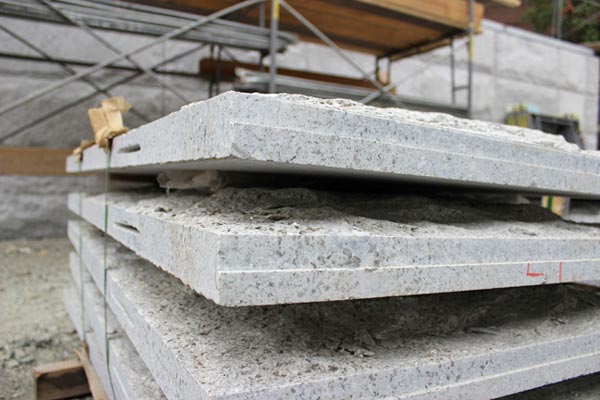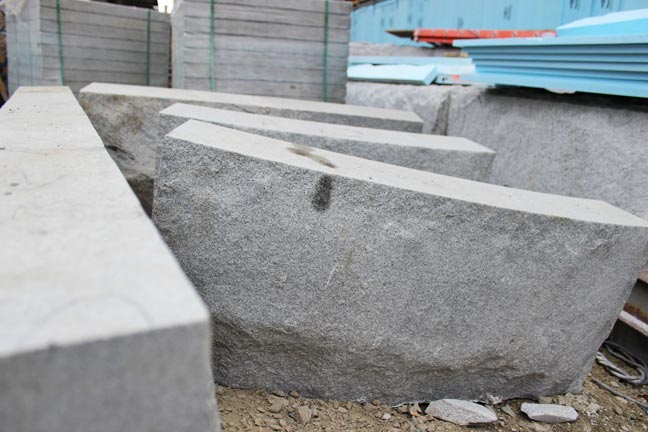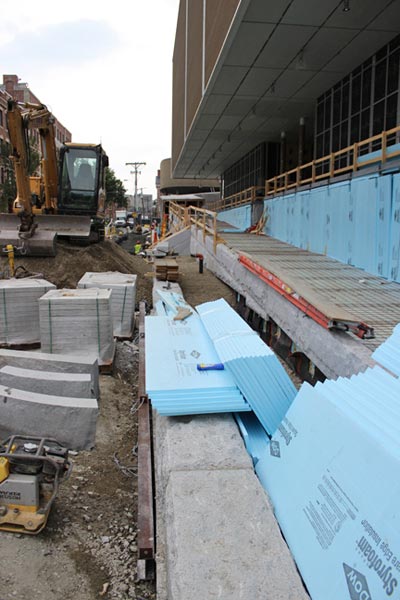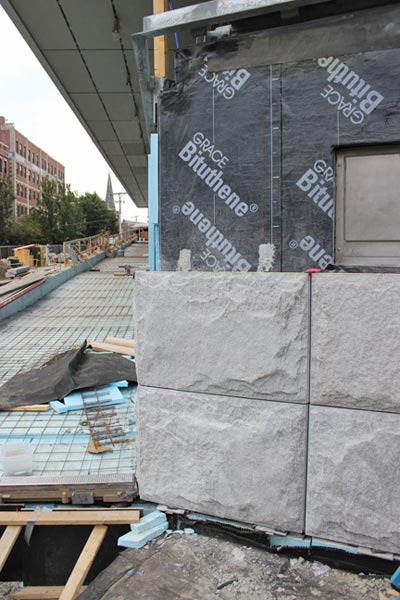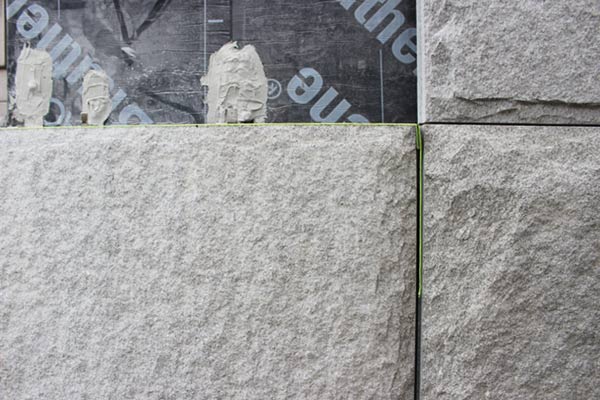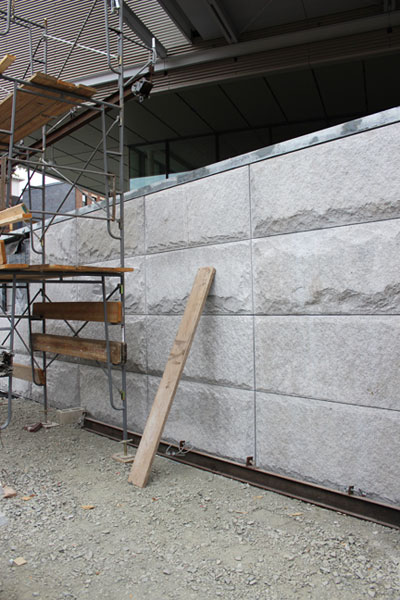We climb a ramp little by little, a sensation entirely different from that given by climbing a staircase. Stairs separate one floor from another; a ramp ties them together.
—Le Corbusier
One of the signature features of the Harvard Art Museums renovation and expansion project is our new Prescott Street entrance, where you can now find a ramp that links to the one leading to the adjacent Carpenter Center for the Visual Arts—the only building in the United States designed by architect and artist Le Corbusier. Architect Renzo Piano designed this access way to maintain the intent of the Carpenter Center’s ramp so that it continues its graceful slope all the way to street level. The ramp also serves as one of several handicap-accessible entryways into our building.
The Carpenter Center, which is now celebrating its 50th year, is made with exposed structural concrete. To blend Corbusier’s famed ramp with Piano’s length of ramp, we used locally sourced Chelmsford granite (experts believe this granite is quarried from the same region as the stone that fashions our 1927 Quincy Street entrance). This gray stone merges with the Carpenter Center’s concrete, making a seamless transition between our two visual art institutions.
Le Corbusier, Œuvre Complète, 1929–1934, as quoted in Fondation Le Corbusier, Educational guide for the La Roche House, n.d. Translation by Deborah Lenahan. www.fondationlecorbusier.fr/CorbuCache/2049_4186.pdf.
